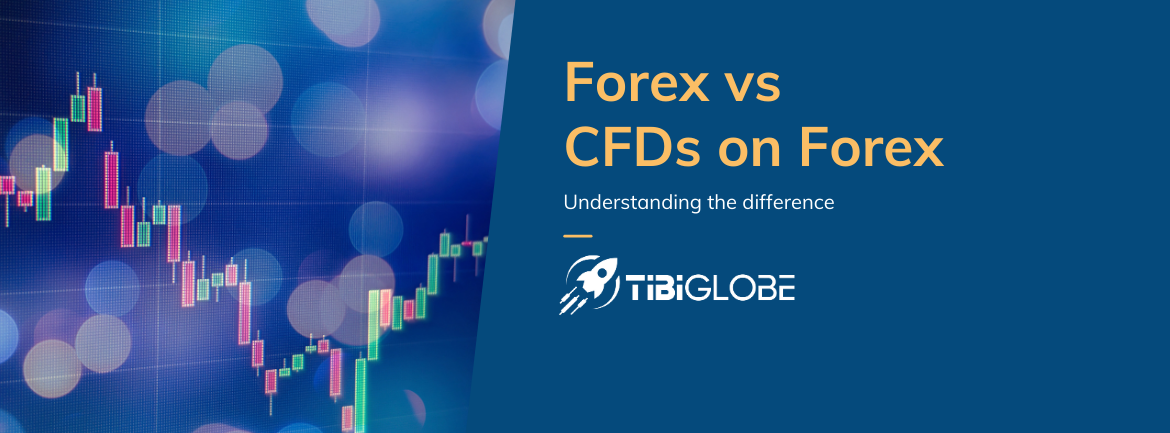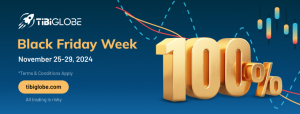Did you realise that when many of us say “trading forex”, we don’t actually mean trading forex. What we’re talking about is “trading CFDs on forex”. It’s a widespread point of confusion, since both trading forex and trading CFDs take place over-the-counter (OTC), meaning they don’t happen on a traditional exchange. This has led many brokers to offer both Forex and CFD trading services. But what’s the real difference between them? Let’s break it down.
Forex trading defined
Trading in forex or foreign exchange involves buying one currency while selling another by speculating price fluctuations to make a profit. Trillions of US dollars are traded through forex every single day, making it the largest and the most liquid market in the world.
Forex transactions do not require a physical exchange of assets. Currencies are exchanged with the aid of computer networks worldwide. The major financial markets where currencies are traded include Tokyo, Hong Kong, New York, Frankfurt, Zurich, Singapore, Paris, Shanghai, London, and San Francisco.
Forex trading instruments are currency pairs, such as EURUSD, USDJPY, USDCAD, and others. A currency is defined by a three-letter code – e.g., the US dollar is referred to as USD, the Canadian dollar as CAD, the Japanese Yen is JPY, and the Euro is EUR.
When trading one currency for another, you buy one for another. For example, if someone trades EURUSD, they buy EUR with USD, where EUR is the base currency and USD is the quote currency. Let’s say the quotation of EURUSD is 1.2500. This means that 1 EUR = 1.2500 USD.
Most importantly, when buying and selling currencies, traders own the physical assets/currencies – e.g., EUR, USD, CAD, JPY, etc. By exchanging one currency for another, they may profit or incur losses, depending on the exchange rate between the quote and the base currency. Exchange rates serve as an indication of currency strength.
Forex pairs are classed into four groups, as follows:
- Major pairs: EURUSD, USDCAD, USDJPY, GBPUSD, USDCHF, AUDUSD, NZDUSD
- Minor pairs: EURGBP, EURJPY, GBPJPY, GBPCAD, CHFJPY, EURAUD, GBPCHF
- Exotic pairs: EURTRY, USDZAR, EURPLN, EURHUF, EURGBP, NZDJPY, AUDPLN
- Cross pairs: USDCNY, USDHKD, USDKRW, AUDCHF, AUDJPY, CADCHF, CADJPY
Forex CFD trading defined
Unlike Forex trading, trading CFDs or contracts for difference involves speculating on the price movement of an underlying asset without owning it.
CFDs are leveraged financial products, which means that by trading them, investors can borrow money from the broker to increase their position size and (consequently the) related results.
That said, CFD trading comes with both benefits and risks. Although leverage increases one’s potential for deriving profits, it also increases risk exposure. This is why traders must exercise caution, keep up with the latest news and apply risk management.
CFDs have grown in popularity amongst retail traders in the past two decades due to their flexibility and low-cost trading. As traders don’t own any of the CFDs’ underlying assets, they can potentially stack profits even if prices drop.
This position is also referred to as ‘Short’, ‘going short’ or ‘short selling’ – when traders ‘sell’ an underlying asset, anticipating a future price decline. Its opposite is known as ‘Long’ or ‘Buy’ – when traders believe the price of the underlying asset is likely to climb, buying in that particular asset.
Because of their flexibility, CFDs can be created around any underlying asset, from Forex to stocks, indices, commodity futures, precious metals, and more. Forex CFDs are some of the most popular and widely traded OTC instruments.
Allowing traders to position themselves alongside the Bulls (on the Buying side of the market) or the Bears (on the Selling side), Forex CFDs provide them with the opportunity to buy or sell in multiple currency pairs simultaneously, increasing their exposure to several currencies and markets.
Trading Forex CFDs with TibiGlobe
TibiGlobe presents traders with a broad selection of FX pairs to choose from, including major, minor and exotics. But how can you make the most of these opportunities?
To empower traders on their journey, TibiGlobe not only provides access to a diverse range of educational materials, including eBooks and a glossary defining some of the widely used trading terms, it also offers razor-thin spreads and competitive swap fees (rollover rates).
With a powerful trading environment based on the user-friendly MT5 platform, TibiGlobe enables traders to trade anytime, anywhere across devices. Advanced indicators such as Fibonacci, MACD, RSI, and others are available right on tap, giving traders the possibility to enhance their trading experience and spot trends with greater accuracy.
In addition to these, tools such as the economic calendar and risk management solutions like Stop Loss help traders identify key events likely to impact the markets and limit the possibility of incurring losses. Ready to give trading a try? Open an account with TibiGlobe if you haven’t done so already and get started.
Risk Warning: Contracts for Difference (CFDs) are complex financial instruments and may not be suitable for all investors. Trading CFDs involves substantial risks of losing your invested capital. It’s important to note that CFDs are a leveraged product, which means they can magnify both potential gains and losses. It’s crucial to understand that CFD traders do not possess ownership or rights to the underlying assets.








